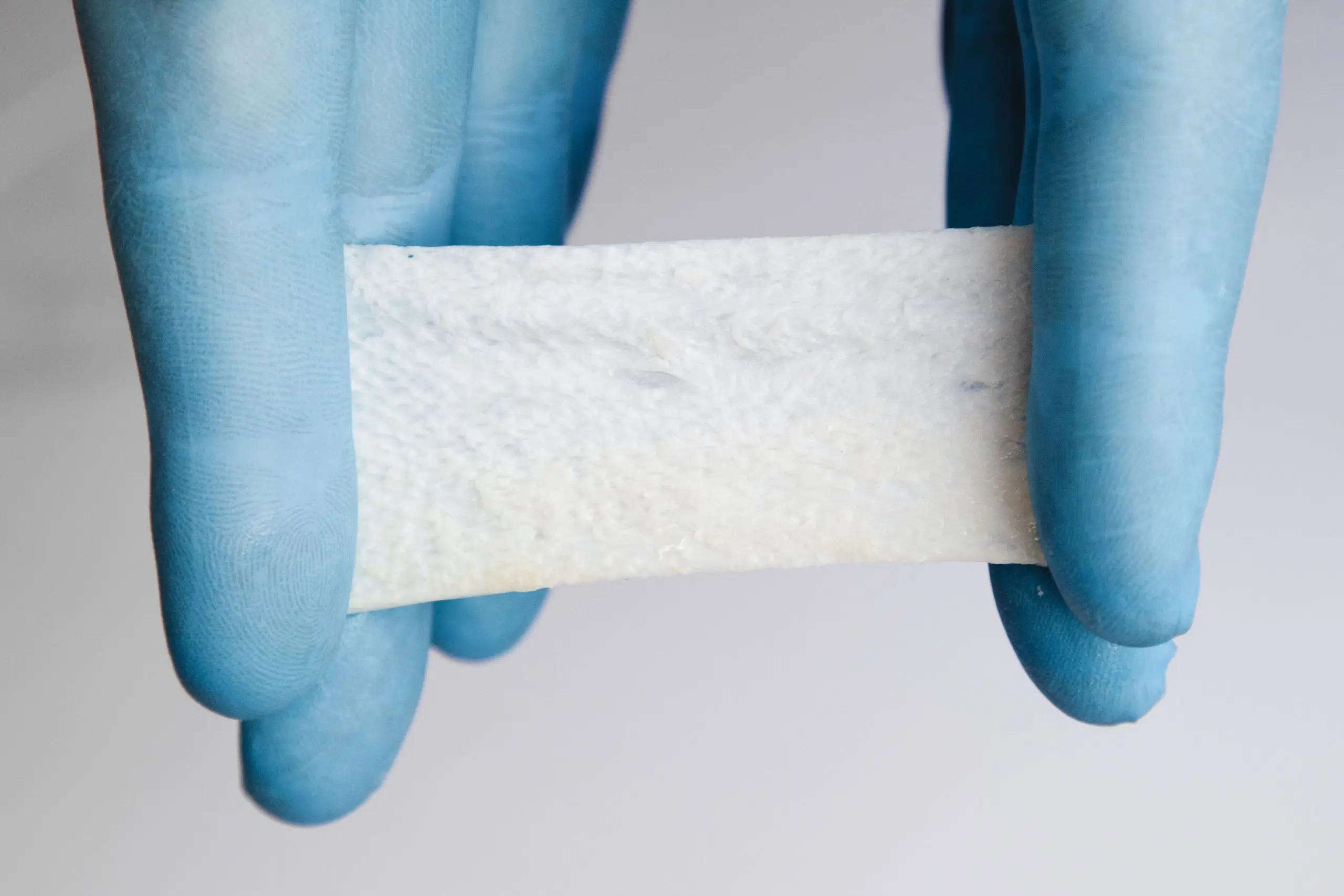

Study adds to growing evidence that fish skin heals wounds faster than the standard of care and amnion/chorion membrane products
ARLINGTON, VIRGINIA, and REYKJAVIK, ICELAND — September 20, 2021 — A study published in the peer-reviewed journal Wounds reports statistically significantly higher healing rates for diabetic foot ulcers (DFUs) treated with Kerecis® Omega3 fish skin compared to DFUs treated with Fibrocol, a collagen-alginate dressing. Of the 64 patients enrolled in the study, 15 healed more than 20% during the screening period or dropped out. The remaining 49 were randomized and included in the intent-to-treat analysis. Of the patients treated with the Kerecis product, 67% had healed after 12 weeks of treatment versus 32% in the control group. The p‑value was .0152, which is considered statistically significant.
Kerecis is a leading cellular-therapy and regenerative-medicine company focused on the development, manufacture and sale of products that protect the body’s own tissues and enable the body to regenerate tissues.
“These statistically significant results may give new hope to patients suffering from diabetic foot ulcers and other wounds,” explained Kerecis founder and CEO Fertram Sigurjonsson. “The doctors in this study documented the healing efficacy of the Kerecis Omega3 fish-skin graft technology. Non-healing wounds can lead to multiple health problems, even amputation.”
Eric J. Lullove, DPM; Brock Liden, DPM; Christopher Winters, DPM; Patrick McEneaney, DPM; Allen Raphael, DPM; and John C. Lantis II, MD, co-authored the paper, “A Multicenter, Blinded, Randomized Controlled Clinical Trial Evaluating the Effect of Omega-2-Rich Fish Skin in the Treatment of Chronic, Nonresponsive Diabetic Foot Ulcers.”
Principal investigators Drs. Lantis and Lullove led the national, multi-center, randomized controlled trial, which was conducted at nine research centers across the United States. The study met all the criteria for evaluation set by the 2019 AHRQ Technological Assessment of clinical trials for Skin Substitutes for Treating Chronic Wounds.
Goals of the Clinical Study
“In this study we sought to compare the fish-skin graft with the standard of care (SOC)—in this case a collagen-alginate dressing—in the management of treatment-resistant DFUs,” explained Dr. Lantis. “We defined DFUs as superficial ulcers that didn’t involve tendons or bone.” The study defined the primary efficacy endpoint as complete wound closure over a 12-week period.
The DFU patients in the study were first treated for two weeks with SOC (including offloading, appropriate debridement and moist wound care) as a screening period. The participating clinics then randomized the patients to either receive SOC alone or SOC plus the fish-skin graft, applied weekly for up to 12 weeks.
The study´s intent-to-treat analysis included 49 patients. At 12 weeks, 16 of 24 patients’ DFUs (67%) in the fish-skin group were completely closed, compared with 8 of 25 patients’ DFUs (32%) in the SOC group (P value = .0152 [N = 49]; significant at P <.047). At six weeks, the area reduction was 41.2% in the SOC group and 72.8% in the fish-skin group.
The researchers concluded that the application of fish-skin grafts to previously nonresponsive DFUs resulted in statistically significantly more fully healed wounds at 12 weeks than SOC alone. The study findings support the use of fish-skin grafts for nonresponsive DFUs.
Study included the current SOC as a high standard
“The standard of care for treating DFUs is constantly improving,” said Dr. Christopher Winters, one of the study´s authors. “We compared the fish skin to an advanced collagen-alginate dressing to represent current alternatives. We wanted to compare it to more than just a simple wet-to-dry gauze or other, older methods.”
Results will help guide clinicians
The study builds on previous evidence that showed improved healing when compared to SOC as well as amnion/chorion membrane products and mammalian-sourced extracellular matrixes (ECMs).
The Kerecis device has previously been compared to MiMedx EpiFix in vitro and in a randomized controlled trial. Robert S. Kirsner, MD, authored a paper published in Wound Repair and Regeneration showing that acute biopsy wounds treated with fish-skin grafts heal faster than wounds treated with a dehydrated human amnion/chorion membrane allograft (dHACM).
In a study published in the journal Military Medicine, researchers showed that the skin-like porosity of Kerecis fish skin facilitates richer cell ingrowth and migration, with 20 times more cell ingrowth into each respective graft than SOC.
Together, the new study and previous data highlight the versatility and benefit of the Kerecis product. “These results will help guide clinicians to make decisions that positively impact both their patients’ outcomes and treatment costs,” said Sigurjonsson.
